Following our experience at Wētā Workshop the plan was to visit New Zealand’s national museum, Te Papa (Māori for ‘the treasure box’). We were intrigued to see the ‘Gallipoli: The Scale of Our War’ exhibition after learning at Wētā that they were responsible for creating the life-like figures on display.

The giant sculptures, 2.4 times human size, took 24,000 hours to complete, not surprising considering the incredible detail and emotion on the faces. The exhibition opened on 18th April 2015 to commemorate the centenary of the ANZAC campaign and will remain until 25th April 2025. The diaries of seven soldiers and a nurse were selected to share the stories through the eyes of ordinary New Zealanders in diabolical circumstances. Stepping into the darkened room, the effect of a huge, spotlighted figure aiming a gun in apparent terror was startling.

Lieutenant Spencer Westmacott was one of the first New Zealanders to climb the steep hills to join the Australians. By nightfall, he had been evacuated with severe wounds to his right arm which was later amputated at a military hospital in Egypt.
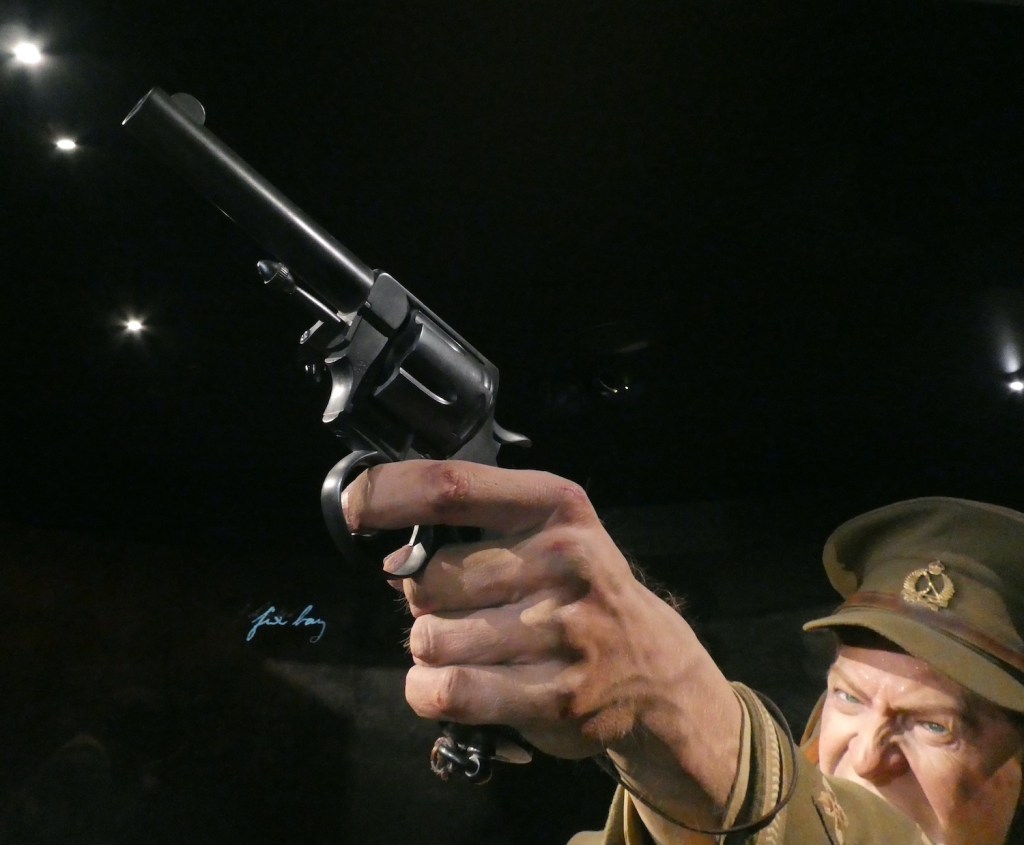
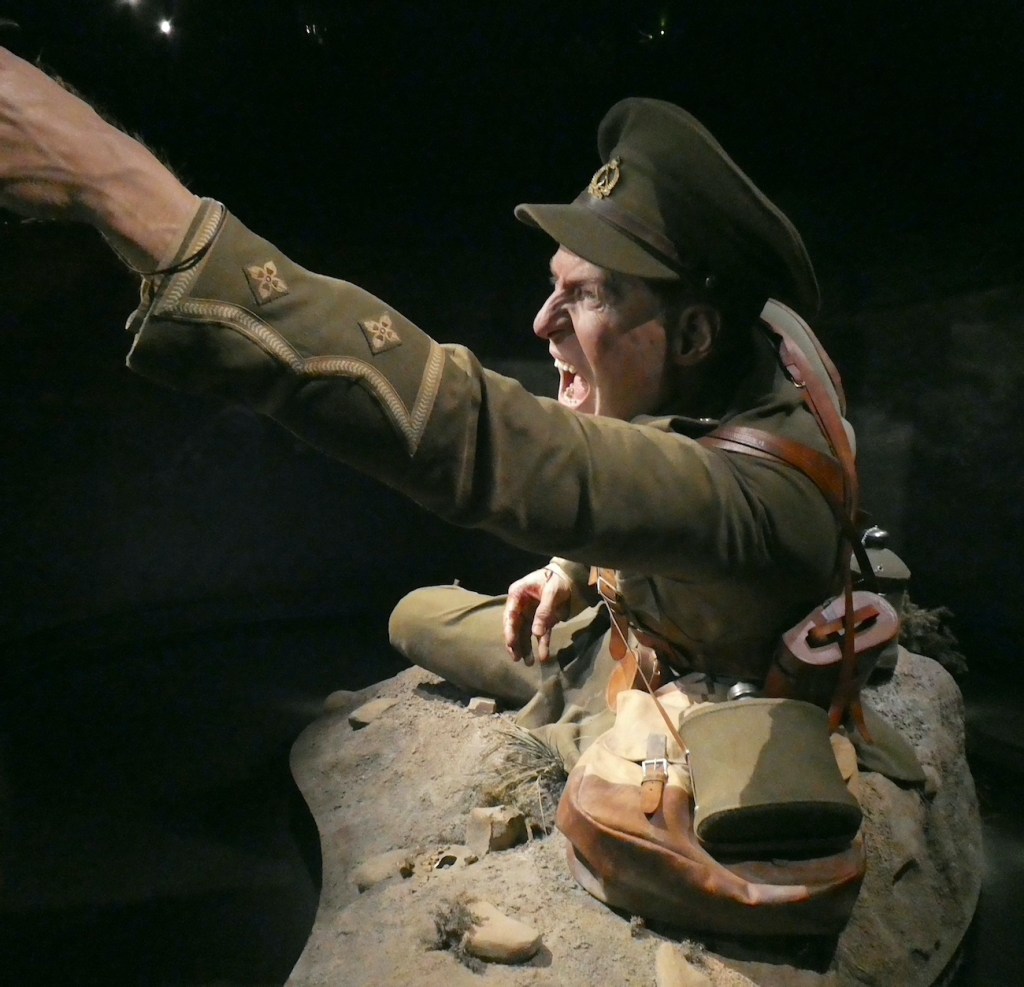
A cut-through model of a soldiers’ kit shows the little protection they had from external armoury.
The despair is palpable on the face of Lieutenant Colonel Percival Fenwick as he leans over the fatally wounded Canterbury infantryman, Jack Aitken.
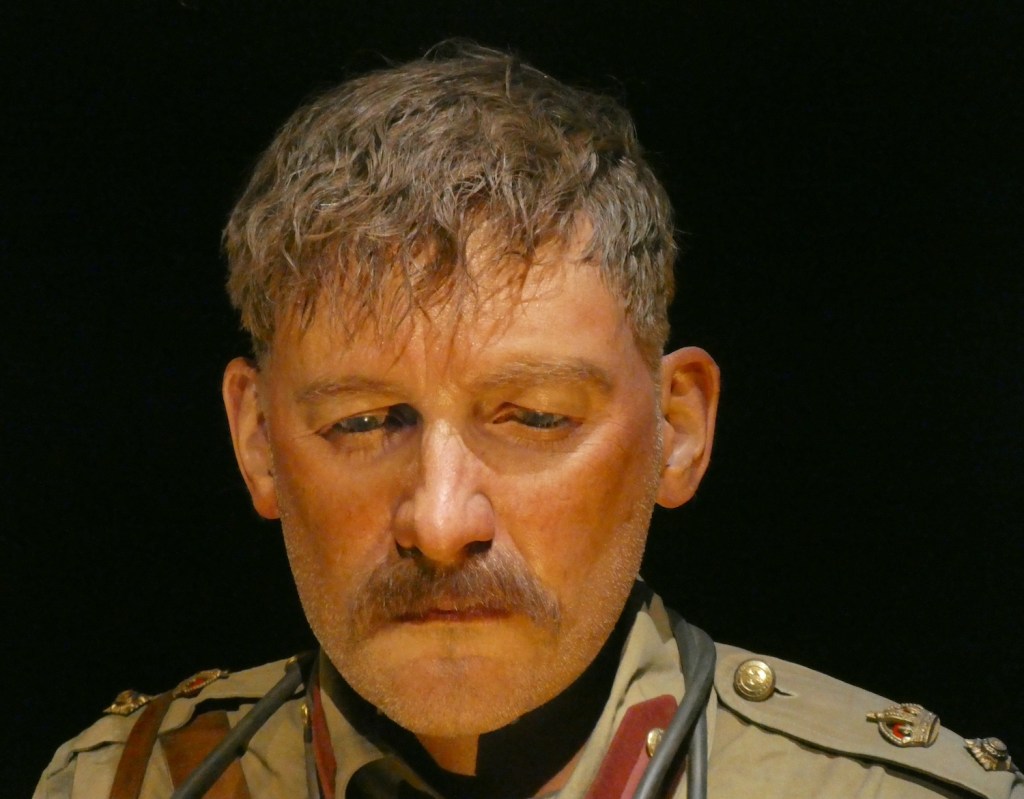
The 45 year old surgeon, a veteran of the South African war, recorded the hellish conditions and his disillusionment with the inept direction of the senior commanders in his diary.



The lonely figure of Private Jack Dunn, eating hard biscuits covered with flies, tells a tragic story.

Malnourished by bad food, he was hospitalised with dysentery but returned to duty while still sick. He fell asleep at his post and was sentenced to death by firing squad. Although his sentence was rescinded, he was killed in action a few days later.
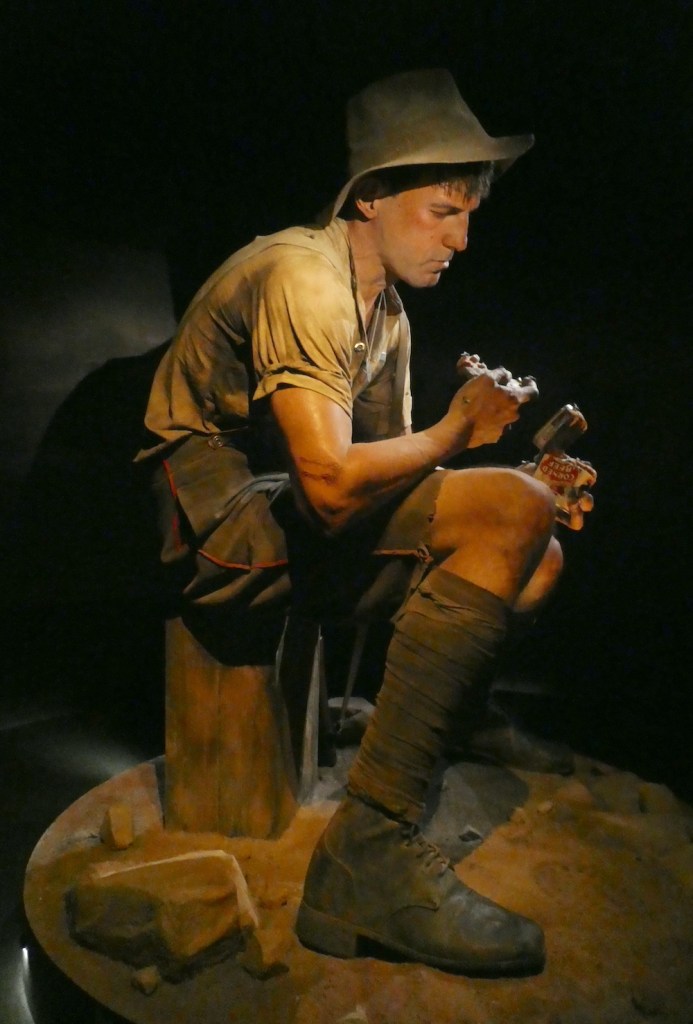
The exhibition is also comprised of 3-D maps and projections, miniatures, models and interactive modules. The daily life activity station hosts a realm of surprises in drawers and cupboards.
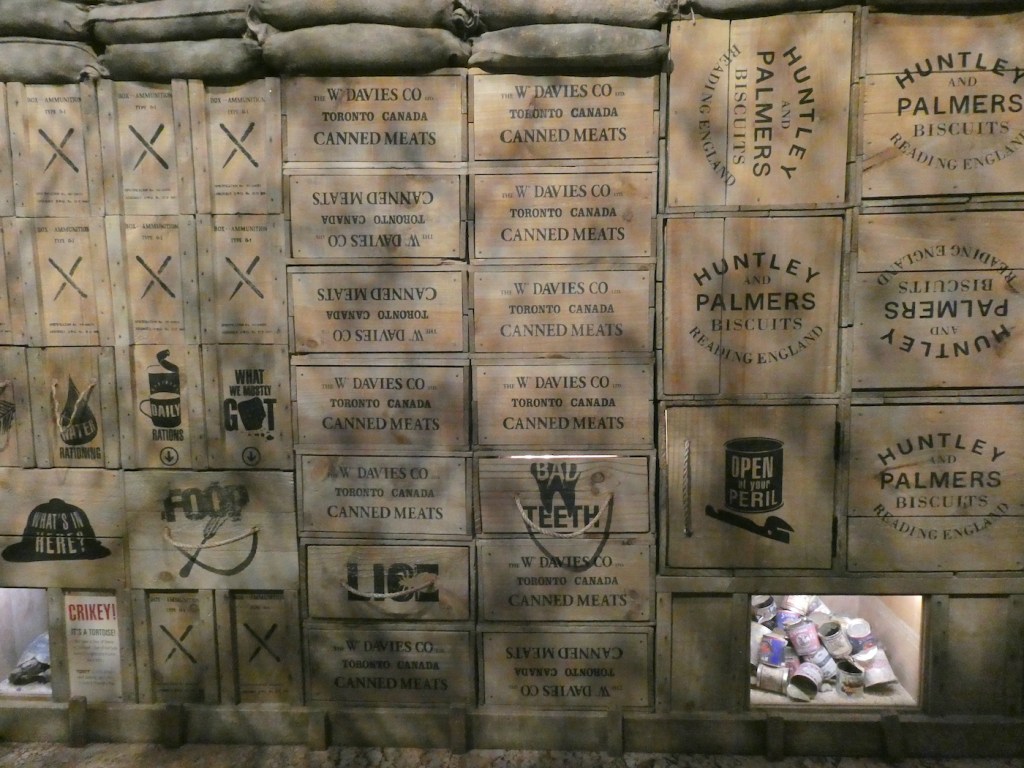
Lieutenant Colonel William Malone’s detailed diary entries echoed Percival Fenwick’s disenchantment with his superiors and the conduct of the campaign. Inside a replica of his dugout, built according to a sketch made by Malone, an actors voice reads the last letter he wrote to his wife, Ida. The moving epistle suggests Malone was certain he would die in the August attack the following day. His intuition proved correct, he was accidentally killed by supporting artillery fire.

The ‘machine gunners trio’ was recreated based on a paragraph in the diary of Private Rikihana Carkeek.

He and fellow Māori soldier, Friday Hawkins found themselves on the same machine gun team under the command of Lieutenant Colin Warden who was unfortunately shot through the heart just after giving the gunners their range.

Almost immediately, gun Corporal Donald Ferris was shot through the head and killed instantly. As the scene depicts, Private Hawkins took charge of the gun while Private Carkeek moved into position to feed the belt. Shortly afterwards, Friday was shot through the wrist and Rikihana took over the gun before being shot through the base of the neck (yes, he survived). It seems all subsequent gunners were shot and badly wounded.
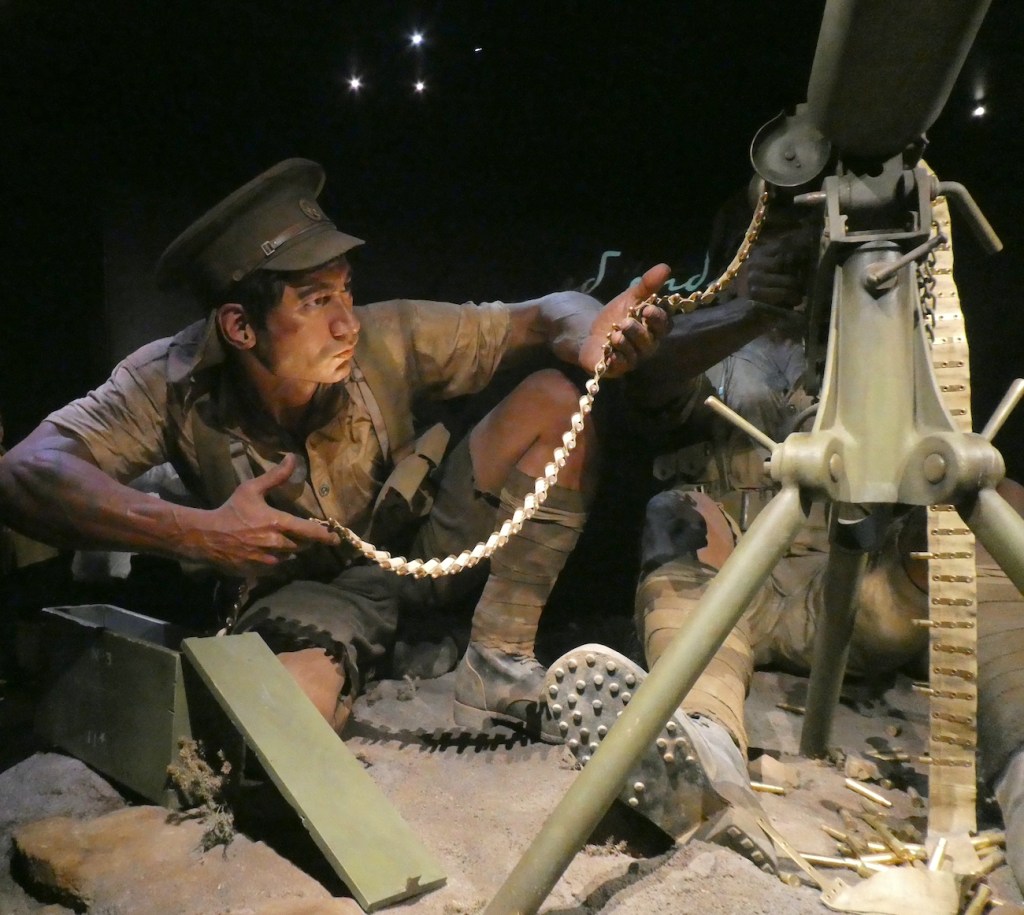
Auckland nurse Charlotte (Lottie) Le Gallais planned to meet up with her brother, Leddie, in Gallipoli. She was selected for the first voyage on the hospital ship Maheno, bound for Egypt but by the time she arrived, Leddie had been killed in action. She is portrayed having just learnt of his death, four months previously, when her letters to Leddie were returned unopened.



Having survived Gallipoli, Private Cecil Malthus then fought on the Western Front where he was promoted to sergeant and was then wounded in action at the First Battle of the Somme. He is the final figure in the exhibition, positioned in a muddy crater which has been filled with poppies by visitors, some bearing handwritten notes.

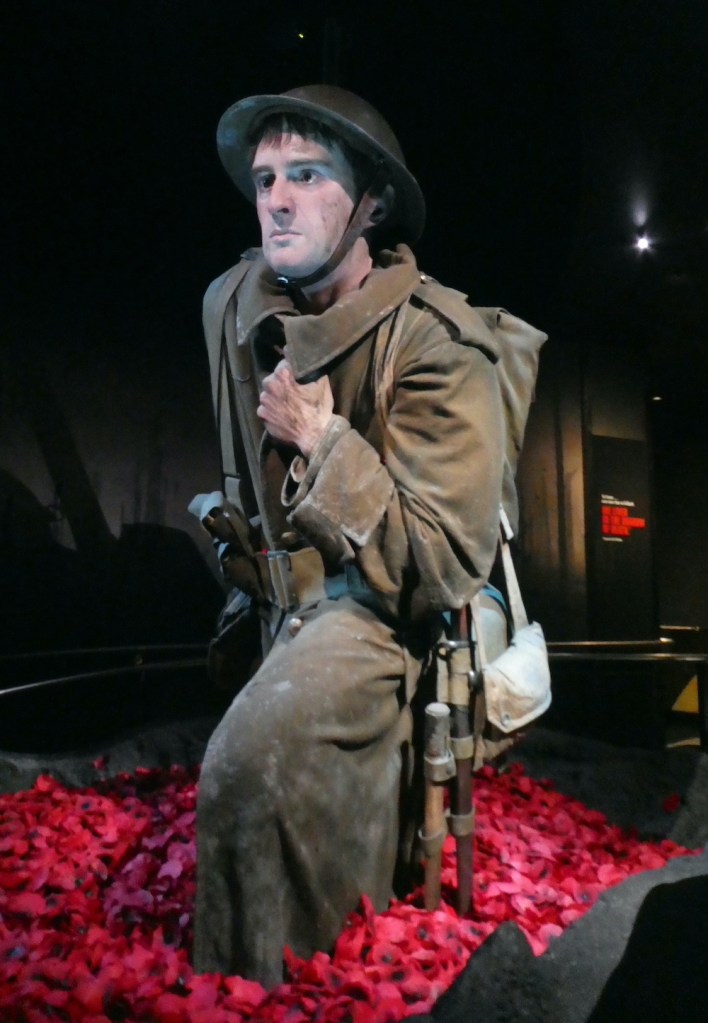

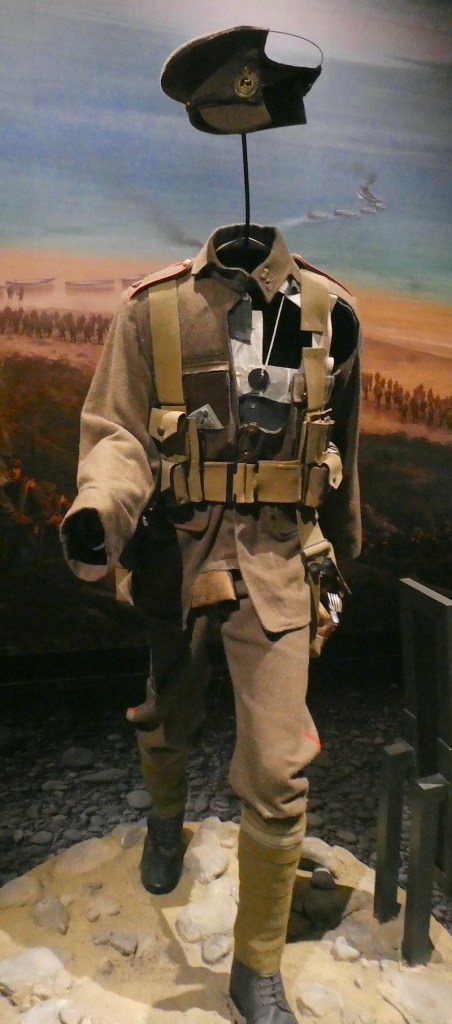
Very moving exhibition 😦
LikeLike
Truly amazing, would like to visit this before 2025. Given current world events I wonder what some countries have learnt from the two world wars……..
LikeLike